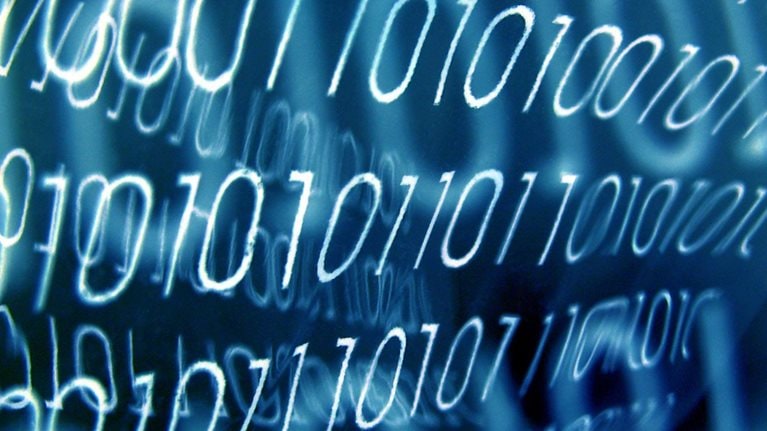As models wearing Google Glass tromped down runways in New York earlier this month, it might have been tempting to see wearable digital devices -- including experimental headgear (what looks like a pair of eyeglasses without lenses that immerse the user in the Internet), smart watches (Web-surfing computers in the form of wristwatches), and running shoes and athletic apparel with built-in data sensors -- as just the latest fad. In fact, they represent a more profound change that is reshaping major industries, even as it blurs the lines between humans and computers.
What has made such devices possible is the interplay between two of what the McKinsey Global Institute has identified as among the most disruptive technologies of the coming decade: the mobile Internet and the Internet of Things. The mobile Internet is the ability to access the Web on mobile devices. The Internet of Things is a set of technologies that incorporates the physical world into the virtual one through networks of electronic sensors and devices connected to computers. The applications of a mobile-ready Internet of Things go beyond clothes: Tiny detectors that can gather and relay data about location, activity, and health (how well an object or device is holding up) have already been incorporated into everything from bridges and trucks to pacemakers and insulin pumps.
The more intimate our relationship with the wired world, the greater the possibilities for harnessing data to make life better. And it is hard to argue that these changes will not be disruptive -- that is, it will have a profound, widespread, and transformative impact on how we live and work. All told, the estimated economic value of these technologies is in the trillions of dollars.
To understand why the combination of the mobile Internet and the Internet of Things is so potent, it is worth looking at these technologies separately. First, the mobile Internet: As the past few years have made clear, the extension of the Internet to mobile devices has made a whole array of new uses possible. Smartphones, the primary device for mobile Internet use, have inspired millions of apps that not only bring standard Web functions, such as search and e-mail, to people wherever they are but also take advantage of location information and other data to provide services to users. These range from the trivial (a scavenger hunt game that gives you instructions based on where your phone says you are) to the convenient (the app that tells you when the next bus will arrive) to the commercial (serving up shopping suggestions based on where you are standing in a store) to the life-saving (an emergency system that alerts individuals who are certified in CPR when they are in the vicinity of a victim in need).
These apps are helping to make the mobile Internet one of the fastest-growing new technologies ever: There are already more than 1.1 billion smartphones and tablets in use worldwide. For comparison, it took until 2008 for the billionth personal computer to be sold -- 30 years after the first PCs came into use. Rapid growth aside, the majority of the world’s population has yet to be connected to the Internet. And this is where the mobile Internet could have a truly profound impact: Two billion more people in developing economies could be brought into the connected world via mobile Internet devices in the next decade, providing them with access to education, online marketplaces, and other Web services that can help raise living standards. We estimate that the mobile Internet could create nearly $11 trillion in overall economic benefits annually by 2025.
Of that $11 trillion, between $1 trillion and $4.8 trillion would be in consumer surplus, which is both the value realized by purchasing goods and services for less than the maximum price and the additional benefits that accrue through their use, such as convenience and time savings. This consumer surplus would be split between users in advanced economies and consumers in developing economies gaining Internet connections. As much as $1.7 trillion would be the value of benefits reaped by companies, which could gain by giving workers access to information wherever they are and allowing them to collaborate more easily. Most of that value ($900 billion to $1.3 billion annually) would be realized by raising the productivity of so-called interaction workers, which include professionals and managers -- an organization’s most expensive talent. The rest of the potential economic impact from the mobile Internet would come from remote health-care services, and applications in education, public services, and retail.
The second disruptive technology, the Internet of Things, makes it possible to monitor and control the location, condition, and behavior of objects, machinery, and devices through networks. This can be as simple as tracking the whereabouts of a container of freight that has an RFID (radio-frequency identification) tag or as complex as managing machinery across an enterprise using actuators that modify the activities of the machines. Closed-loop systems can respond in real-time and without human intervention to data that its sensors pick up. For example, with sensors and actuators in oil fields, pumping systems can automatically adjust to optimize production and reduce the potential for failures through early detection of anomalies in the flow of oil and gas. Already, the Internet of Things is used across industries to manage complicated supply chains, optimize performance of machinery, and sense when maintenance is needed.
By 2025, Internet of Things applications could have an economic impact of $900 billion to $2.3 trillion a year in manufacturing alone. This estimate is based on potential savings of 2.5 to 5 percent in operating costs. In addition, using sensors in the power grid (smart-grid applications) could drive value of $200 billion to $500 billion annually, and applications in public-sector services (water systems and the like) could cut waste by ten to 20 percent annually, which could save $20 billion to $40 billion a year.
When the mobile Internet and the Internet of Things are combined, the economic possibilities are truly astounding. One obvious area of focus for researchers is in health care. Caring for patients with chronic conditions consumes a huge portion of health-care spending. That cost will only rise as populations age. Using remote monitoring to head off emergencies can help avoid expensive hospitalizations, needless suffering, and even premature deaths. Today, patients can check in with their doctors from home and relay results from self-administered tests; soon, wearable monitors will make it possible to provide continuous readings, not only preventing emergencies but also providing researchers with big-data files that may help refine treatments. By 2025, such devices could reduce the costs of treating chronic diseases by ten to 20 percent annually, saving $900 billion to $2.1 trillion a year globally.
A related development -- the so-called quantified-self movement -- involves gathering health and fitness data from wearable devices (for example, pedometers built into sneakers) to monitor performance, heart rates, calories burned, and other data to guide training and medical choices. The smart watches that are in development all include health-monitoring capabilities. Wearable devices also promise to blend virtual and physical experiences -- a concept known as augmented reality. For instance, by combining a digital camera in a wearable device with image-recognition software, a shopper can automatically be fed comparative pricing information based on the image of a product captured by the camera.
To be sure, risks to privacy and personal freedom from these new technologies could be sizeable: It could be a short trip from monitoring a patient’s vital signs to punishing patients for sneaking a cigarette or forbidden food. And the same technology that can help the CPR expert find a heart attack victim in a crowded stadium can show a repressive government where its political enemies are gathering. Yet the potential economic and social benefits (not to mention entertainment possibilities) are too enormous to pass up. Intimate Web technologies are coming, and consumers and businesses will quickly find uses for them. To remain competitive, companies will need to invest in capabilities -- technical talent as well as tech-savvy managers and executives. Policymakers will need to get out in front of these developments to erect appropriate regulatory frameworks and enforcement capabilities to ensure that in a world where people and machines are inseparable, people remain safe and secure.
This article originally ran in Foreign Affairs.


